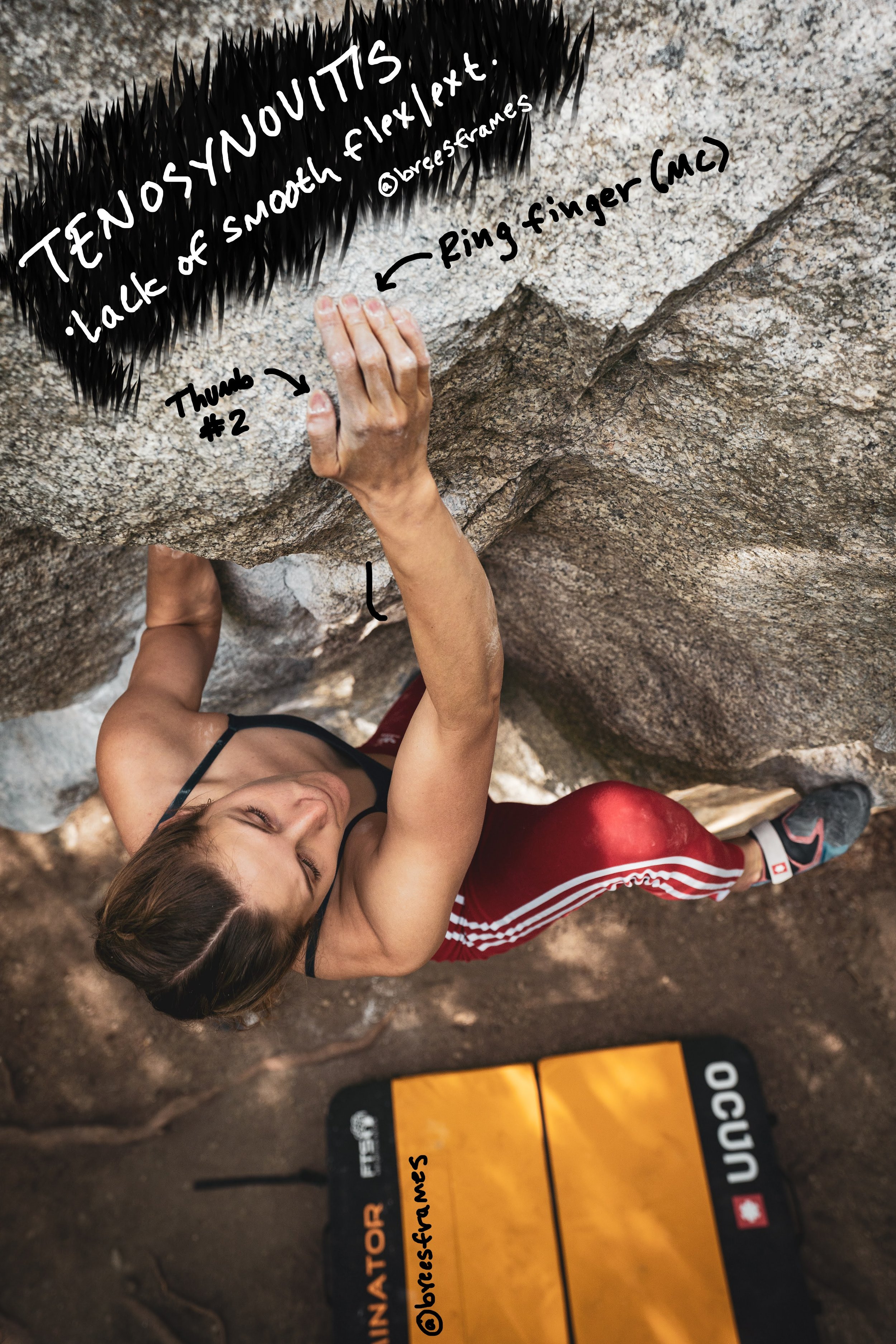Rock Climbers and Trigger Finger
The Specifics of Trigger Finger
Your tendons don't have a direct blood supply. As a consequence, each tendon is covered in a membrane (synovial membrane) filled with fluid. This fluid is designed to hydrate the tendon, provide nutrients, and remove waste.
Patients with trigger finger commonly present with digit catching, popping, locking, and an inability to fully flex or extend the digit. There is often a "lack of fluidity" in movement of the ring finger and/or thumb. This comes as a result of decreasing the proportion of the flexor sheath to its contents.
In some instances, patients may present with a painful nodule over the A1 pulley that covers the MCP joint in the palm. This pathology happens in around 2% of the general population and increases to 20% in those with diabetes mellitus.
A complication for climbers with trigger finger is the trilaminar structure of the A1 pulley. There are usually 2 layers (bilaminar), but those with trigger finger develop hypertrophy in the deepest layer. This causes stenosis (closure) of the flexor pathway. A more narrow pathway cannot tolerate as much gliding (volume).
so, what can you do?
It is recommended to use a MCP splint (limiting flexion) in addition to an initial steroid injection. Splinting is dependent on compliance and can also be managed without its use. Modified loading and a reduction in repetitive finger flexion is absolutely necessary to reduce further progression.
Key takeaways:
This is another pathology you're not going to forget about or stretch away.
It requires a modified plan, patience, and a slow progression.
Don't treat this like a typical pulley injury.

